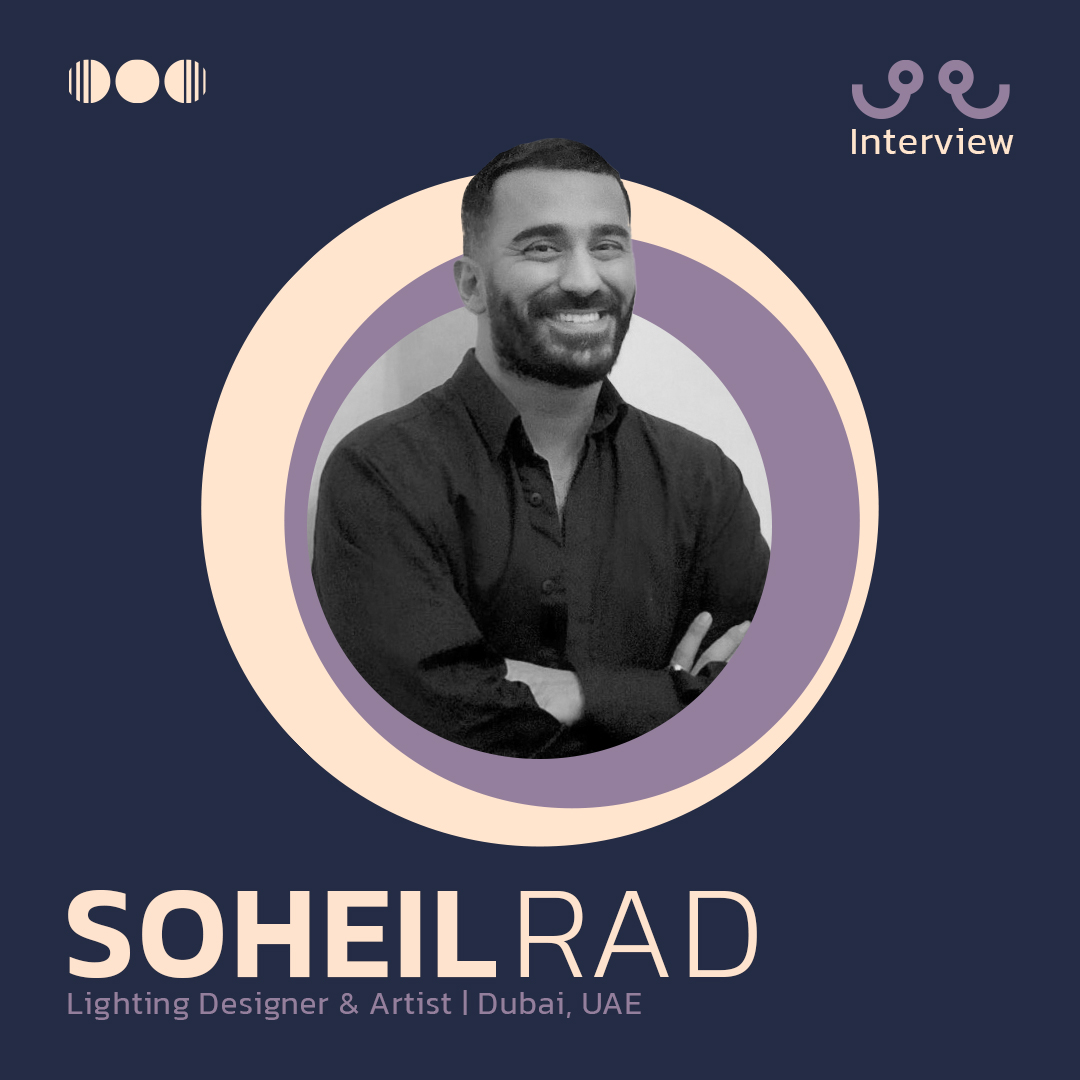Seyedali Miri is an award-winning designer recognized by the A’ Design Award, New York Design Awards, and DNA Paris, whose work explores the delicate boundary between tradition and modernity. With a background in civil engineering and later architecture, he has developed a design approach that combines analytical precision with creativity and imagination. His experience living and working in boutique hotels in Iran and Oman has also been a major source of inspiration, teaching him that design is not only about aesthetics but also about responding to human needs, emotions, and memories.
A clear example of this philosophy is his project Aurum Light, a modular lamp inspired by traditional Iranian oil lamps that tells a cultural story while offering contemporary functionality. His co-designed chair with Jalal Mashhadi Fard, winner of the New York Design Award, further highlights his versatility. Today, Miri is recognized as one of the top three designers in Oman, with a philosophy rooted in honesty, simplicity, and bridging cultures through design. He believes that good design requires empathy and deep human understanding, and he envisions his future in creating objects and spaces that are not only functional and beautiful but also carry memory and cultural meaning.
.
Designooor: How did you enter the world of lighting product design?
My journey into lighting design began organically. With my background in civil engineering and architecture, I was always drawn to the interaction between form, structure, and atmosphere. Later, working in hospitality exposed me to the emotional power of light how it transforms spaces and influences people’s experiences. This realization guided me to create pieces where light is not only functional but also emotional and cultural.
Designooor:What experiences from other fields, such as architecture or other arts, have influenced your approach to lighting design?
Architecture taught me proportion, balance, and technical rigor, while hospitality gave me a deep understanding of human behavior and cultural diversity. Together, these experiences shaped my approach to lighting as more than illumination it became a tool to connect people to spaces, memories, and traditions.

Designooor: The inspiration from traditional oil lamps is evident in ‘Aurum.’ Besides this influence, what other sources have had the most impact on shaping your design style?
Beyond traditional oil lamps, I draw inspiration from cultural rituals, natural landscapes, and personal memories. Growing up surrounded by rich heritage in Iran, and later experiencing the multicultural fabric of Oman, gave me a perspective that blends symbolism with functionality. Silence, memory, and human connection are recurring themes in my design language.
Designooor: What is your philosophy when integrating light into product design?
I believe light should feel natural, timeless, and human. My philosophy is to let light tell a story one that calms, connects, and enriches the atmosphere. Rather than designing loud statements, I focus on quiet honesty, where light serves both as function and as poetry in daily life.
Designooor: If you had the chance to introduce one innovative feature to reduce environmental impact in design, what would it be and why?
I would focus on modularity and adaptability. A product designed to transform and serve multiple purposes reduces the need for excessive consumption. This approach allows a single design to evolve with people’s needs over time, minimizing waste while encouraging sustainable use of resources.

Designooor: In ‘Aurum,’ the ability to switch from table to pendant mode showcases your technical creativity. What was the biggest creative challenge you faced in this process, and how did you turn it into an opportunity for innovation?
The greatest challenge was creating a seamless transformation without compromising elegance. I wanted the transition between table and pendant to feel effortless and intuitive. This pushed me to experiment with locking systems and structural details until I achieved a balance of simplicity and technical precision. That challenge became an opportunity to show how adaptability itself can be a form of beauty.
Designooor: If you were to share one key lesson from your design experience with a young designer, what story or piece of advice would you offer?
I would tell them to listen listen to materials, to spaces, and to people. Don’t rush to follow trends; instead, focus on what feels honest and meaningful. The most powerful designs come from patience, observation, and care. My own journey taught me that design is not about impressing, it’s about expressing with sincerity.





